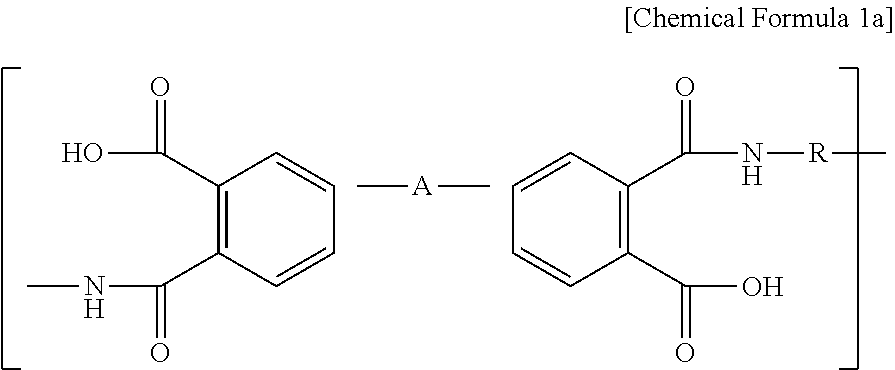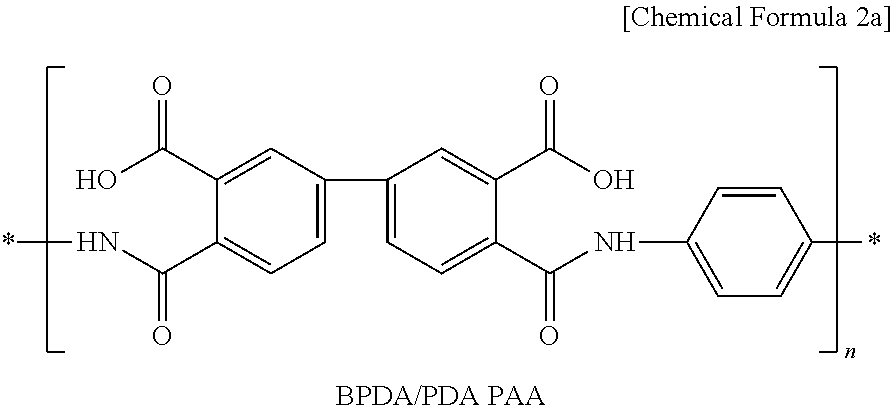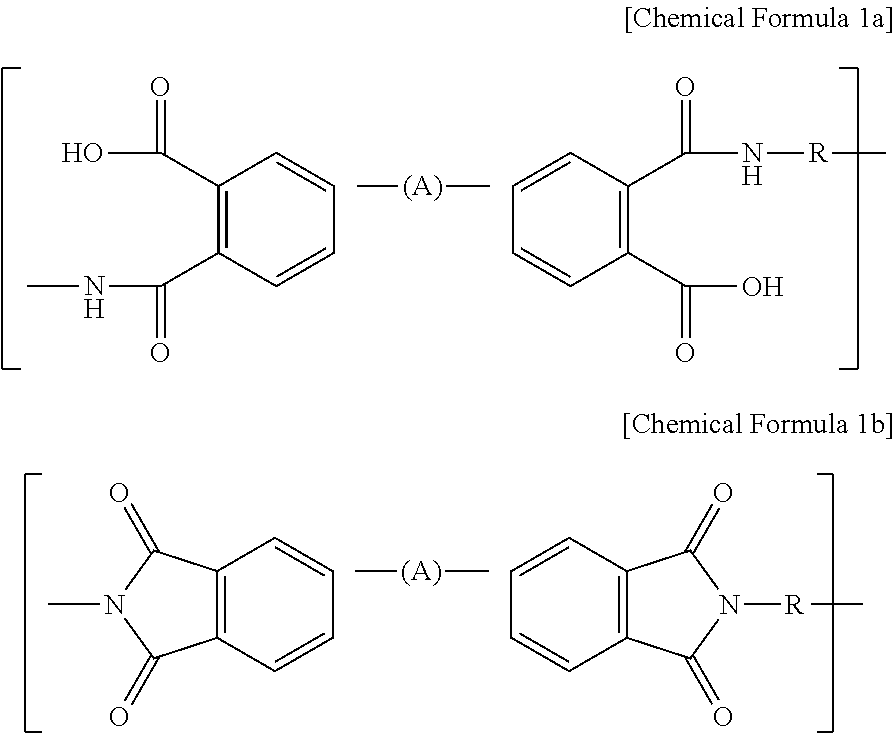Cathode having improved safety and lithium secondary battery including the same
a lithium secondary battery and cathode technology, applied in secondary cells, battery servicing/maintenance, cell components, etc., can solve the problems of increased battery life, difficult application of conventional cid and ptc elements having a pouch-type battery casing, and increase the amount of battery, so as to inhibit abnormal heat emission and thermal runaway or combustion, and interrupt current flow more effectively
- Summary
- Abstract
- Description
- Claims
- Application Information
AI Technical Summary
Benefits of technology
Problems solved by technology
Method used
Image
Examples
example 1
[0060]First, 95 wt % of Li(Ni1 / 3Mn1 / 3Co1 / 3)O2 as a cathode active material, 3 wt % of carbon black as a conductive material and 2 wt % of polyvinylidene fluoride (PVdF) as a binder polymer were added to N-methyl-2-pyrrolidone (NMP) as a solvent together with 0.5 wt % of BDPA / PDA PAA represented by the above Chemical Formula 2a to provide cathode mixture slurry. Next, the slurry was applied onto aluminum foil having a thickness of 20 μm as a cathode current collector and then dried to obtain a cathode. Then, pressing was carried out by means of a roll press to provide a cathode.
example 2
[0061]A cathode was obtained in the same manner as Example 1, except that 1 wt % of PVdF and 1 wt % of BDPA / PDA PAA were used.
example 3
[0062]A cathode was obtained in the same manner as Example 1, except that PVdF was not used and 2 wt % of BDPA / PDA PAA was used.
PUM
| Property | Measurement | Unit |
|---|---|---|
| temperature | aaaaa | aaaaa |
| melting point | aaaaa | aaaaa |
| temperature | aaaaa | aaaaa |
Abstract
Description
Claims
Application Information
 Login to View More
Login to View More - R&D
- Intellectual Property
- Life Sciences
- Materials
- Tech Scout
- Unparalleled Data Quality
- Higher Quality Content
- 60% Fewer Hallucinations
Browse by: Latest US Patents, China's latest patents, Technical Efficacy Thesaurus, Application Domain, Technology Topic, Popular Technical Reports.
© 2025 PatSnap. All rights reserved.Legal|Privacy policy|Modern Slavery Act Transparency Statement|Sitemap|About US| Contact US: help@patsnap.com



